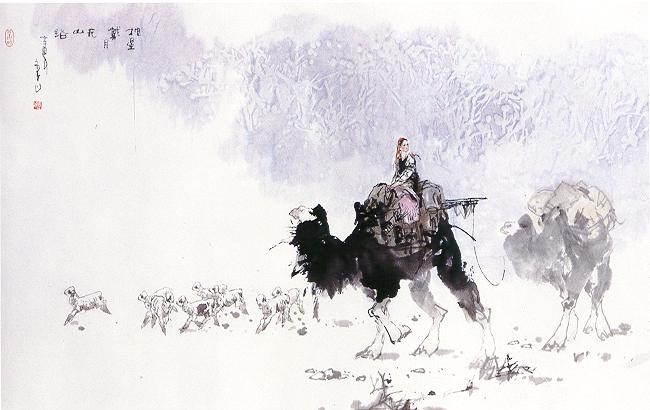
Scholars use the term Silk Road to denote a network of trails and trading posts, oases and emporia connecting East Asia to the Mediterranean. The Silk Road network is generally thought of as stretching from an eastern terminus at the ancient Chinese capital city of Chang’an (now Xian) to westward end-points at Byzantium, Antioch, Damascus, and other Middle Eastern cities. Beyond these end-points, other trade networks distributed Silk Road goods throughout the Mediterranean world and Europe, and throughout eastern Asia (Major et al, 2001).
This ancient network existed long before the Silk Road got its name from the German geographer Baron Ferdinand Von Richtofen who first coined the term ‘Seidenstrasse’ or the Silk Road in 1877. The famous Chinese explorer Zhang Qian is regarded as ‘the Father of the Silk Road’ for being the first man to bring back accounts of Central Asia to China after his 13-year expedition. The Han emperor Wudi dispatched him to the lands west of China in 138 BC. Zhang Qian was captured twice and detained for around 10 years by Xiongnu, a Central Asian tribe. The greatest success of Zhang Qian’s mission was that it enthralled the imperial court with information of the 36 kingdoms west of China’s frontiers. This information opened up the outside world to China for the first time, which helped the country to establish trade relations with the western regions.
By 53 BC the network of routes comprising the Silk Road became so active that Chinese silks started reaching as far as Rome. In the first two decades of the Common Era, the Chinese silk reached a point where Rome paid in gold and silver for silk from China. Overland routes of the Silk Road system originating in Chang’an in China extended as far as Bursa in Turkey.
Throughout the history of the Silk Road, countries and kingdoms came into being and vanished and people shifted from one place to another. For that reason, countries along the Silk Road as they stand today did not exist before modern times. Nonetheless, in terms of geographical context we can consider the whole of Eurasia as the Silk Road Region, which means most parts of Asia and Europe. Some of the countries in today’s world that constituted the ancient Silk Road Region include Azerbaijan, China, Korea, Egypt, Indonesia, Iran, Iraq, Italy, Japan, Kazakhstan, Kyrgyzstan, Malaysia, Mongolia, Pakistan, Russia, Sri Lanka, Syria, Tajikistan, Turkey, Turkmenistan, Ukraine and Uzbekistan.
